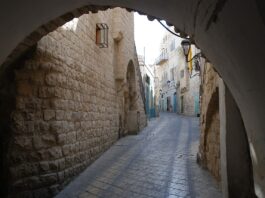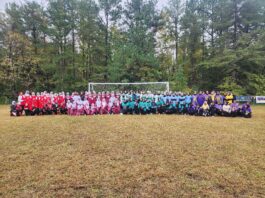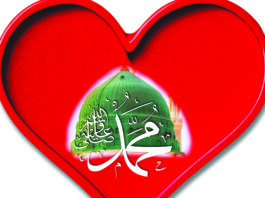This personal account of my visit to a few of the many holy sites in Turkey is a tribute to those blessed souls who give their lives for the cause of Almighty Allah, The Creator. It also acknowledges those lovers who preserve sacred relics so that generations may be inspired by Islamic History.
First of all, you never know when Allah might change your fortune! I got a short work assignment that took me directly from JFK International Airport in the United States, to Ataturk International Airport in Istanbul, Turkey, in approximately 10 hours. Once in that Muslim country, I visited the Topkapi Palace where the Ottoman Sultans lived from the 15th to the 19th centuries. There I stood in line with tourists from around the world to purchase tickets to view Holy Relics of Nabis and saints. I stared in awe as I beheld the sword of Nabi Dawud and the rod of Nabi Musa, may the peace of Allah be upon them.
Then there was more – the hand and partial skull of Nabi Yahya, peace be upon him,encased in gold and studded with gemstones.
As I moved on, there were special showcases in the Pavilion of the Holy Mantle, which enshrined relics of Nabi Muhammed, peace be upon him, and his blessed family. Samples of his (peace be upon him) blessed hair, his sword, blessed footprint and drinking bowl were all viewed mostly in silent contemplation by both Muslims and non- Muslims.
Also preserved for viewing were swords of Hazrat Ali, may Alllah’s mercy be upon him, and blessed companions of Nabi Muhammad, peace be upon him, including Khalid bin Walid.
As we moved, along we saw a dress of Bibi Fatimah, may Allah be pleased with her. Preserved for viewing too, was a shirt of blessed martyr Hazrat Hussein, may Allah be pleased with him, grandson of Nabi Muhammad, peace be upon him. Though simple in design, the blessed garment of Imam Hussein, may Allah be pleased with him, was overpowering in its majesty. I was struck too, by the simplicity and small size of Bibi Fatimah’s dress, may Allah be eternally pleased with her.
I then visited the ‘Hareem’, an ornate section of the palace where the ladies of the palace, servants and young sons of the reigning sultan lived. In fact, it was the private living quarters of the Sultan and his family, within the palace complex. As I walked through the courtyard towards the mosque, recently hung banners reminded me of guidance from Hadith, the written collections of the sayings and actions of Nabi Muhammad, peace be upon him, for daily living. The nearby bazaar sold books and other Islamic items, including dhikr beads and hijabs,Muslim ladies scarves. Close by, I saw the famous Blue Mosque and the Ayah Sofia which was first a church, then a mosque, and is now a museum. That area was being renovated.
I was later enthralled by the story of Fatih Sultan Mehmet- the conqueror (1432-1482), as I viewed his grave. His reign was known for its tolerance of religious differences and intellectual vigor. The Sultan himself spoke seven languages and was responsible for the construction of eight universities. The plaque by his blessed tomb explained that he was a handsome, quiet and courageous warrior who destroyed the Byzantine Empire and conquered Istanbul, formerly called Constantinople. He was one of the most learned men of his time and a superb leader and warrior who remained calm in times of trouble. He also captured many lands including Bosnia, Serbia, Herzegovina, Belgrade and Hungary, and fought against the Crusader Army, which comprised soldiers from 20 countries. He survived 14 plots on his life and finally succumbed to poison at the hand of a Jewish doctor at the age of 49 years.
The final holy sites that left a lasting impression on my mind were, first of all, the tomb of Nabi Yushua (Joshua), which is situated next to ancient copper and leather shops that still operate much as they did centuries ago. Then there was the trip to Urfa, in the desert across the Euphrates River, to the birthplace of Nabi Ibrahim, may Allah’s peace be upon them all. That sacred site is at the foothill of the ruins of Nimrod, the cruel king, whose castle is at the top of the hill. The rose garden which Allah created for Nabi Ibrahim, peace be upon him, when evil King Nimrod catapulted him into the fire, still exists today. So too, does the lake with fishes which Almighty Allah created from the logs Nimrod used to heat the fire. It was awesome to try to understand Allah’s Rahmah (exceptional Compassion) for His friend, Nabi Ibrahim, upon whom be peace, as I viewed that cool lake with fishes in the middle of the desert.
The last account is of my visit to the cave where Nabi Ayuub, peace be upon him, lived as he endured the illnesses and affliction that tested his faith. The guard allowed about 10 persons from the men’s line to enter and leave and then 10 ladies from the women’s line. I thought the system for separating men and women to view and pray in a single tiny cave was quite unique and very Islamic.
Finally, a drink of cool water from the well that cleaned Nabi Ayuub, upon him be peace, of his sickness was indeed a mercy for the thousands of visitors to that blessed site.
Certainly, that short visit to a few of the lovingly preserved sites in Turkey was a confirmation of my faith in Islam. It was also a reminder of the promise of Almighty Allah that- Islam is the final message for all mankind and it will be preserved for all times, even though the unbelievers may detest it.
Entrance to the cave of Nabi Ayyub, upon him be peace.
Pilgrims visit the cave of Nabi Ayyub, upon him be peace.
A rose in the Rose Garden of Nabi Ibrahim, upon him be peace.



